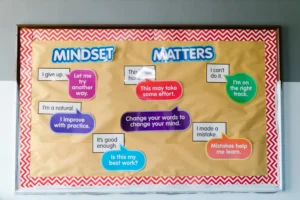The average business can generate $2 for every $1 they spend on AdWords.
Are you getting this kind of return?
While it’s easy to set up an AdWords account and start creating ads, optimizing them is a totally different challenge.
If you don’t do it right, you can say goodbye to the possibility of doubling your investment.
Today, we’ll focus on an aspect of your ad that doesn’t get as much attention:
Your landing page.
Your landing page is actually one of the most important aspects of your ad. We also call it the final URL.
In AdWords campaigns, there are two URLs. The first, is the display URL. And, the second, is your final URL.
Here is an example of a display URL:

This display URL www.officedepot.com/Breakroom/Coffee is clean and easy-to-read.
While the final URL looks like this:
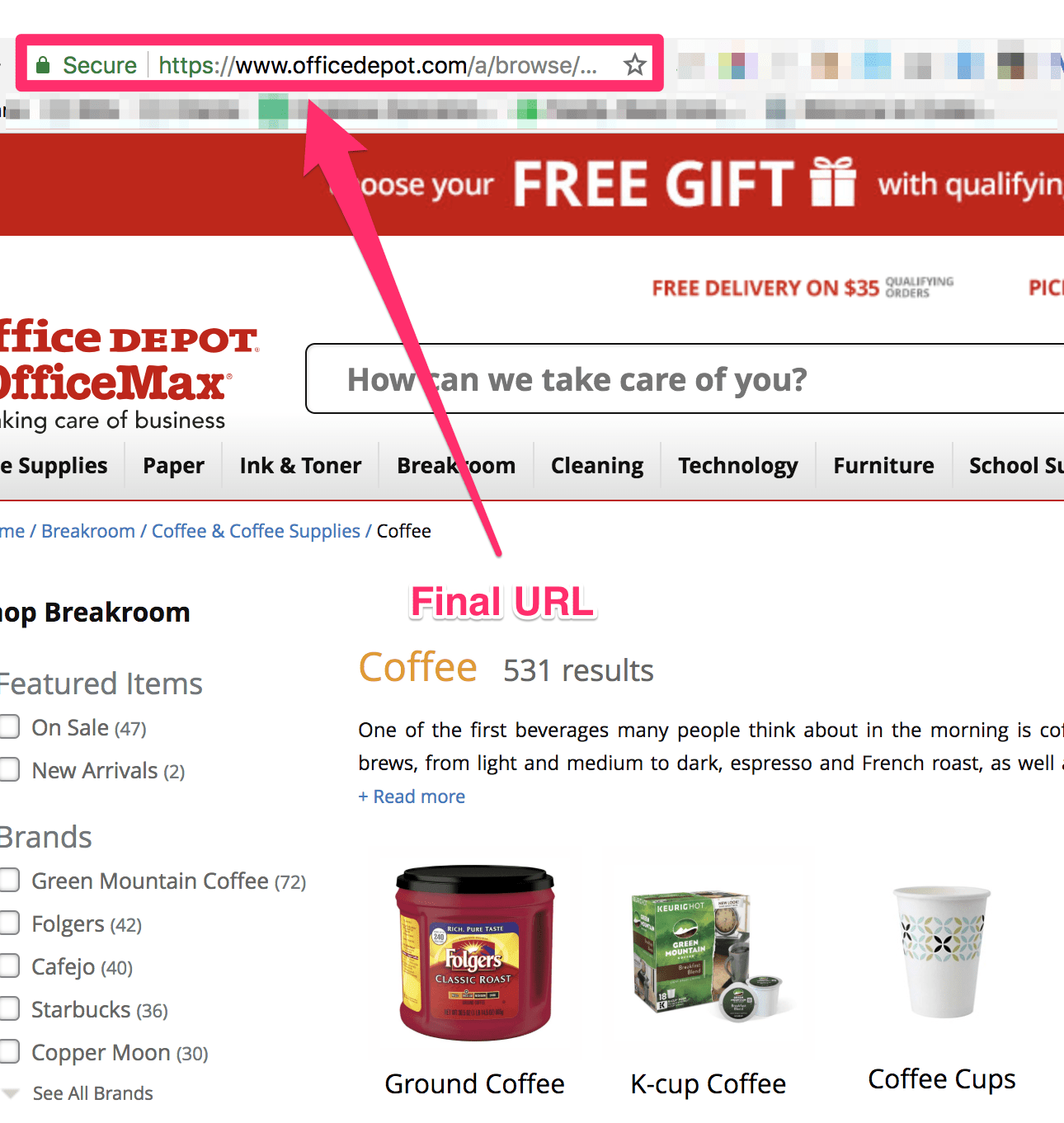
Here is the full final URL: https://www.officedepot.com/a/browse/coffee/N=5+1154874/?cm_mmc=Google-_-NB …
It’s filled with tracking parameters for Google and not formatted for the reader.
In this post, I’ll show you how to optimize your final URL and achieve a higher click-through rate.
But first, let’s look at why marketers are experiencing low CTRs.
Why marketers experience low click-through rates on AdWords
If your CTR is low, it means that fewer users are clicking your ad, and you could be missing out on potential customers.
When you create an ad on AdWords, Google gives you a quality score that dictates not only your CPC but also your average position.
Your quality score is all about relevancy.
The keywords, ad text, and final URL you use should relate to each other as much as possible.
This makes the advertisement better for the users who are viewing it. And that makes it better in Google’s eyes.
The higher your ad position, the more your CTR increases.
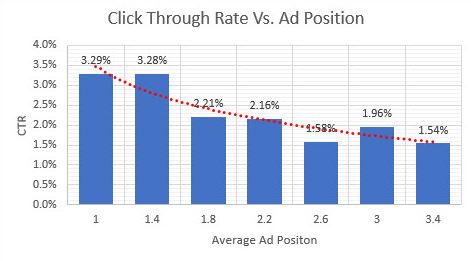 Increasing your quality score needs to be a priority.
Increasing your quality score needs to be a priority.
The more clicks you get, the more visitors you’re funneling to your landing page.
So, why aren’t people clicking your ads? Here are a few mistakes you might be making.
Reason #1 – Targeting the wrong audience
Not every demographic will respond to the same ad in the same way. That’s why it’s crucial to target the right audience.
Otherwise, you’re spending money on ads that aren’t serving your ideal customer.
It all begins with choosing the best keywords.
There are three different types of Google searches. As you can see below, they represent users who have varying degrees of interest in buying.

You need to consider the intent of the users who will search for the keywords you’ve added to your campaigns.
One of the best ways to do this is by determining which stage of the buyer’s journey they’re in.
Here’s the buyer’s journey in a nutshell:
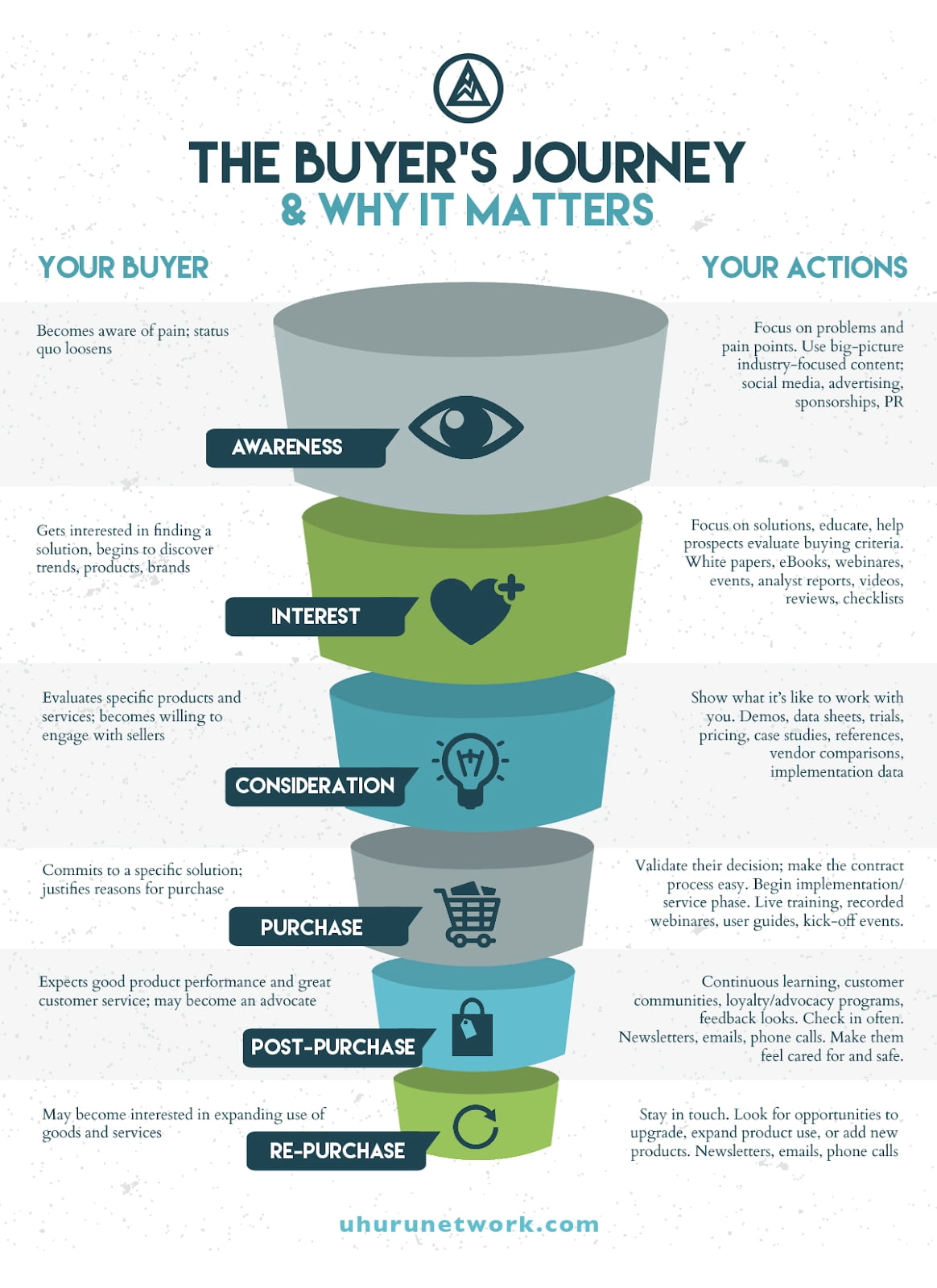
The buyer becomes aware of a problem. Then, they begin researching different products and solutions to solve their problem.
Once they’ve found some options, the customer will do further research. Finally, they’ll commit and make a purchase.
So, what stage is the user in who is searching for your keyword?
Are they in the awareness stage where they barely know your brand? Or are they on the precipice of purchasing?
Determining where they are in their journey will let you tailor your ads to them.
But if you target someone in the wrong stage, they probably won’t even give you the time of day.
For example, if a user is in the awareness stage, sending them right to a product page probably won’t grab their attention.
That brings me to my next point.
Reason #2 – Not optimizing the final URL
Some marketers aren’t paying enough attention to how important the final URL is.
When a user clicks your ad, will it bring them to the right page?
If not, you’ll experience higher bounce rates and lower conversions. The average conversion rate for search ads is 1.91% across all industries, so use that as a benchmark.
You need to give adequate attention to other areas of your ad like the copy and keywords. But don’t forget to optimize and test URLs.
I’ll show you how you can test the final URL and various ways to tweak it for better results in the next section.
Reason #3 – Ads aren’t mobile responsive
Projections show that there will be over 5 billion mobile users globally by 2019. That’s more than half of the earth’s population!
Google originally geared AdWords toward desktops. While the number of users who are searching from desktops is still significant, mobile is quickly catching up.
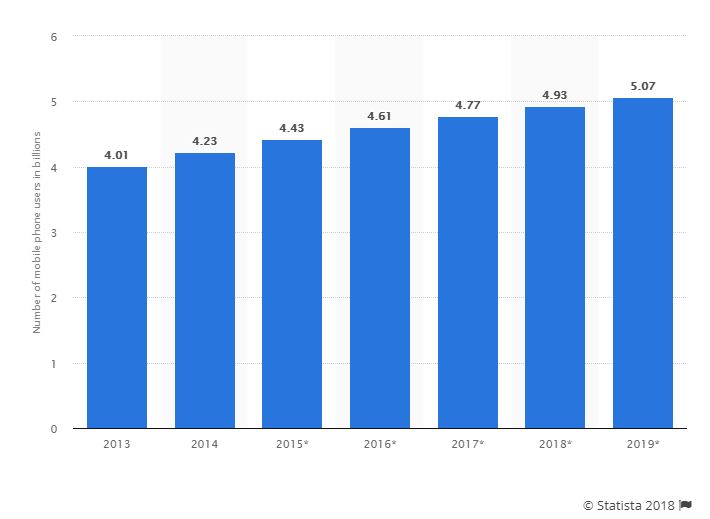
This means that it’s more important than ever to have ads that are mobile responsive.
Every device has a different screen size, so content and advertisements won’t look the same on every platform.
You can dramatically improve your users’ viewing experience by ensuring that your ads show up correctly on every screen.
Mobile users bounce the most often on advertising and marketing material.
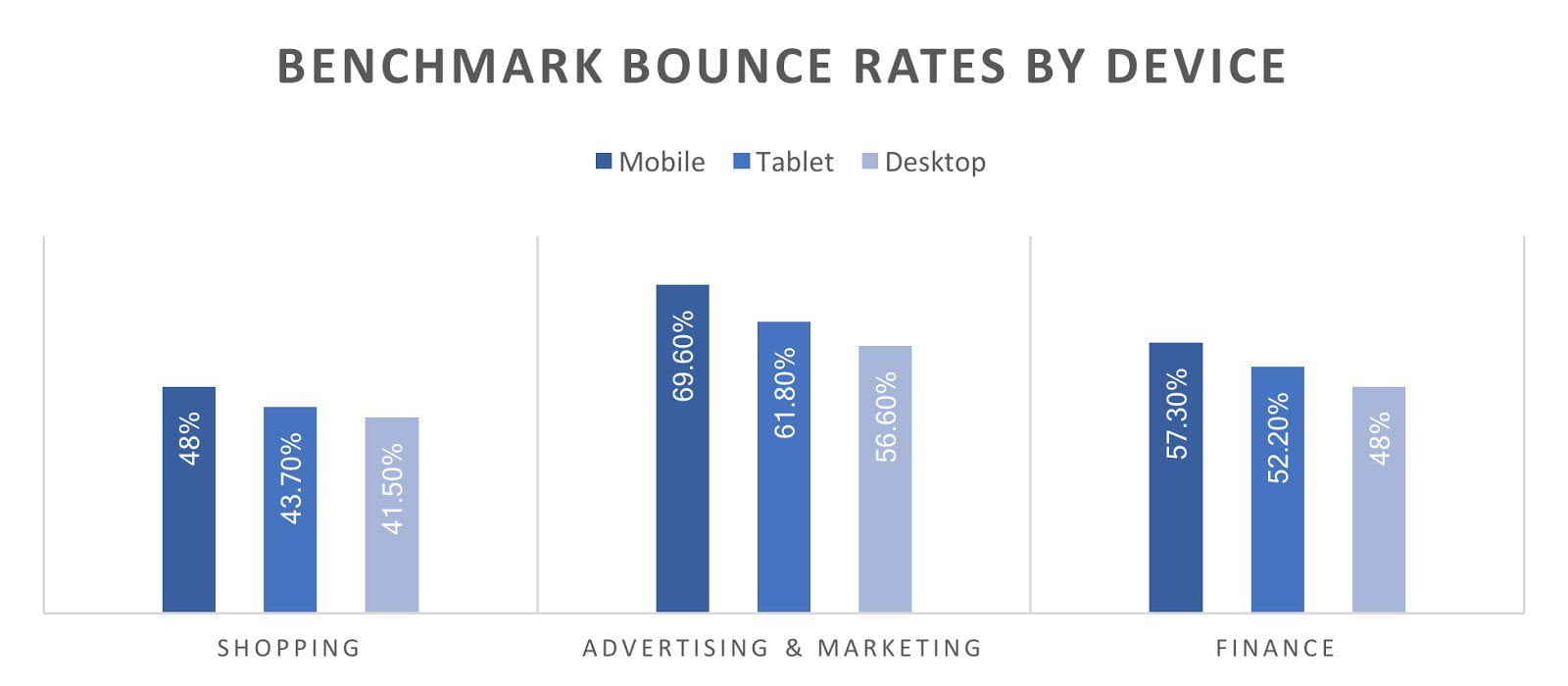
Luckily, Google now offers expanded text ads that they’ve optimized for searches on mobile devices.
They give you deeper customization of your final URLs.
If that wasn’t great enough, they found that advertisers experience an increase in click-through rate when using expanded text ads.
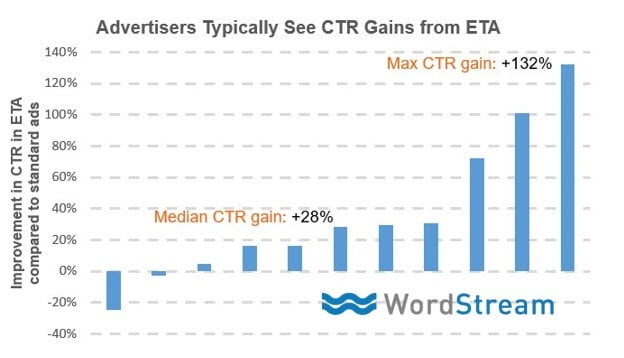
I’ll be showing you how to set them up in the next section so you can reap their rewards.
Maximize your final URL click-through rate
Now that you understand what’s potentially lowering your CTR and conversions with AdWords, it’s time to improve your ads.
These strategies will help you increase your click-through rate and optimize your final URLs.
Targeting the right keywords
It all begins with attracting the right kind of users.
AdWords will display your ads to users who search for the keywords that you’ve specified.
This means that thorough keyword research can make all the difference in your campaigns.
If the ad and final URL align with what a user is searching for, they’ll be more likely to click.
To begin performing keyword research, open up Google’s Keyword Planner.
Click “Search for new keywords using a phrase, website, or category.”

In the following field, enter a keyword related to your business and what you’re selling.

Consider the intention behind your keyword. Based on what they are searching, would a user be interested in purchasing?
There are three basic types of queries on search engines:
- Transactional: Users are searching to purchase a product.
- Informational: Users are interested in obtaining information about a topic or product.
- Navigational: Users are looking for a specific website or brand.
If you’re targeting users who you would like to direct towards a sales page, transactional keywords are ideal.
The above example of “men’s dress shoe” could be informational or transactional. A search for “Affordable men’s dress shoes” would indicate much more buying intent.
Google offers neat features for advertisers who are promoting products.
For example, shopping ads are great. They display an image, price, and callout.
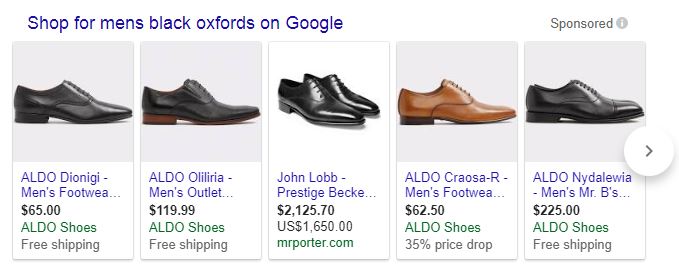
If you want to take a more visual approach to attracting customers with your ads, then give it a shot.
To further explore the shoe example, a keyword like “best dress shoe material” would be an informational keyword that you could target.
It would be best to use a final URL that funnels users toward content like how-to videos or guides. In this content, you can mention relevant products that you sell.
When it comes to navigational keywords, they have very clear intent — a user is looking for your brand. It’s plain and simple.
For these types of searches, use branded keywords on your display ads. Even if you already rank well for them organically, you can take up more positions by running ads that target them.

Testing final URL variations
There are two different URLs that you need to be aware of in your ads. The first is the display URL:
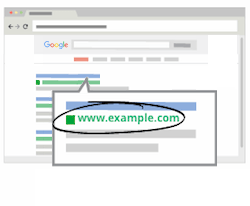
This often displays the top-level domain of your website. But, when a user clicks, it might take them to a completely different page. That’s the final URL.
To test out different final URL alternatives, navigate to the keywords section of AdWords from the sidebar.
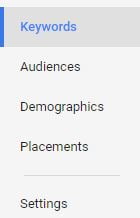
Hover over the final URL column of any given keyword and click the small pencil icon. This will allow you change where a user lands depending on which keyword they’ve entered.
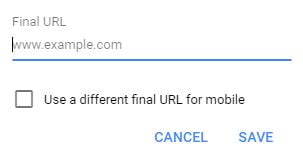
Remember the buyer’s journey that I touched on earlier? This plays a big role in how you choose your final URL.
Users in the awareness stage aren’t too committed to purchasing just yet. This means that they’re more interested in performing research.
To adapt, your final URL could point to data-driven content like case studies you’ve created. In this content, speak to their needs and pain points.
You should try to collect emails from this page so you can target subscribers who enter the next stage of the buyer’s journey. Similarly, content should point deeper into your sales funnel.
For ads targeting the consideration stage, the final URL ideally will point to a page where users can request a demo. This can help push them over the edge to becoming a paying customer. You could also include testimonials, review pages, and case studies about your product.
When users are at the last stage of the buying process, they’ve already performed research and weighed their options. They’re ready to make a decision.
Keywords such as “X brand versus Y brand” are good examples of this. Buyers who search for these keywords have narrowed it down to two options and want to know which one is better.
At this stage, you can use product and category pages as your final URL. Since they’re ready to buy, sending them straight to the sales page can be effective.
Using expanded text ads
Expanded text ads are similar to traditional text ads but with some added changes.
To get started, visit your AdWords dashboard and select “ads and extensions” from the left-hand sidebar.

Then, hover over an ad and select the pencil tool that appears. This will open up a window that allows you to expand your text ad.
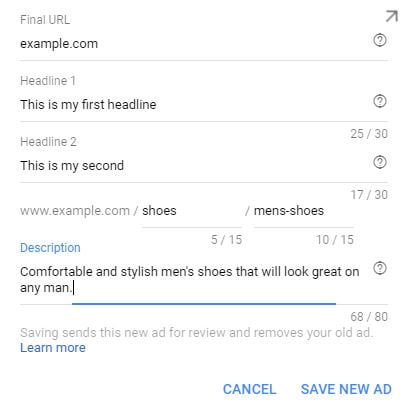
As you can see, you get two headline fields instead of just one. You can fit much more copy to entice users.
Not only that, but the headlines can now be a total of 30 characters. Google has increased it from the original 25-character limit. They’ve also merged the description line into one with an 80-character maximum.
Google added something else that’s very useful:
Two final URL paths.
This allows you to simplify complex URLs, which makes your ad text easier to read.
Let’s say that you want your ad to funnel users to a shoe category page. The URL might be www.example.com/products/shoes/mens-shoes
To give users a better understanding of where they will land, you can enter “shoes” and “mens-shoes” into the two paths. It would display as www.example.com/shoes/mens-shoes.
Shorter URLs tend to perform better on search engines, and it’s no different with ads. It’s simply easier for the reader to see where the link will take them.
To maximize your click-through rate, keep URLs short and straight to the point. When possible, include your main keywords in them.
Since expanded ads are automatically responsive to mobile devices, you won’t need to create mobile-specific ads while setting up a campaign anymore, either.
You might have noticed that there isn’t a need to enter a display URL, too. This is because expanded text ads take your final URL and shorten it, which saves you some time.
Using ad extensions
In 2016, Google rolled out added extensions, including a price display. This allows you to set prices for products or services and show them in your ad.
A study found that when price extensions are enabled, advertisers experience a higher click-through rate.
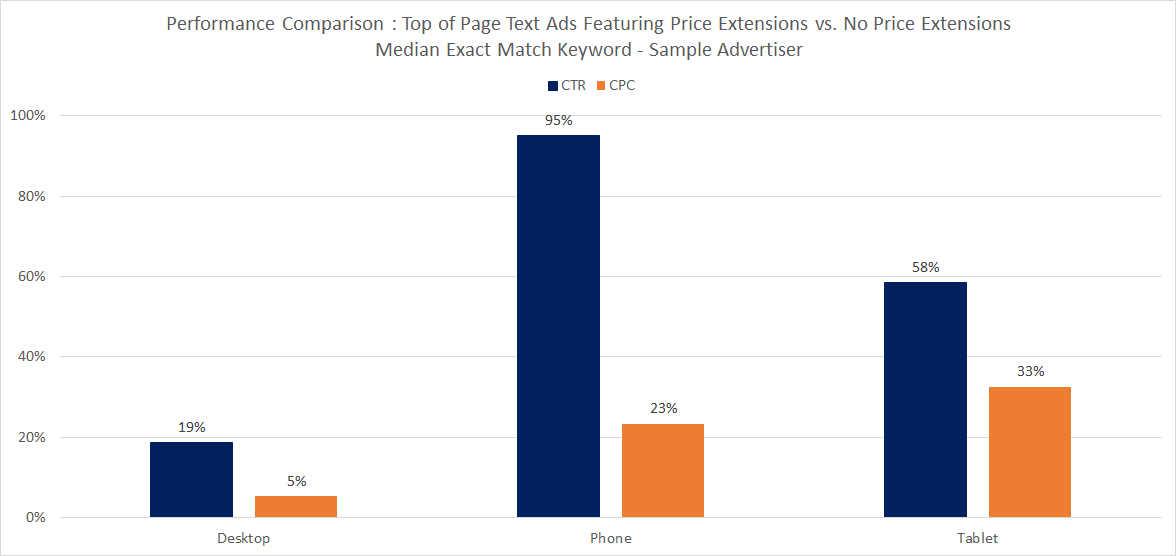
To implement price extensions on an ad, navigate to the “ads and extensions tabs” section again, but choose the extensions tabs on the top bar.
![]()
From here, click the blue add button and select price extension from the drop-down menu.
![]()
You can then create individual price extensions to reflect exact products and their prices. Under each extension, you can modify the final URL and the mobile final URL.
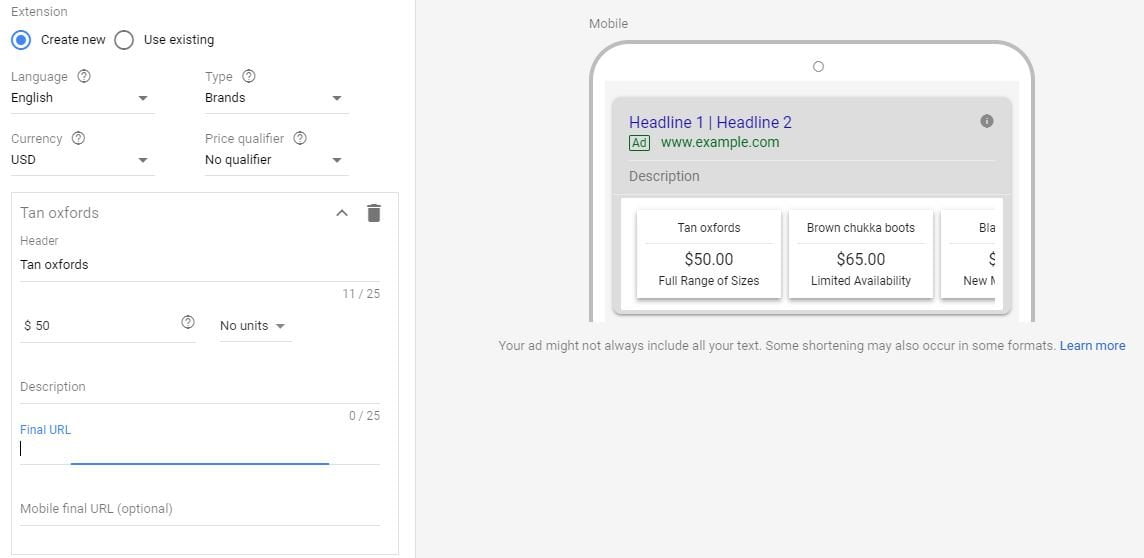
This creates the opportunity to analyze which products and URLs receive the greatest click-through.
You could use variations of final URLs between the various extensions to discover which one gets clicked the most.
Another ad extension which can improve your CTR is the callout extension. This allows you to highlight offers or calls to action to entice users to click.
From the extensions tab in AdWords, select the blue “Ad extension” button and choose “Callout extension.”

You can enter up to 25 characters for the callout description.
Use it as a way to promote special deals or incentives which relate to your final URL. Free shipping, sales, and discounts promotions are good ideas.
You can implement callout extensions to individual ad groups or campaigns as a whole. If your ads vary in message, you can test out different callouts for each of them.
The date and time for callouts can also be scheduled. This gives you further control over when they will appear to users.
If you know that you make the most sales at a certain time of day, you could potentially schedule the callout to appear then.
Duplicate text is not allowed for callouts, but it’s actually a good thing.
It forces you to try out variations, different selling points, and calls to action.
Next, let’s look at the sitelink extension. It appears on all devices and has a lot of versatility, as you can point to any page of your website.
This means you get a lot of control over your final URL.
You can choose it from the ad extension drop-down menu.

When you’re writing your sitelink text, you’re only given 25 characters, so make the best of it.
Sometimes short and sweet is better.
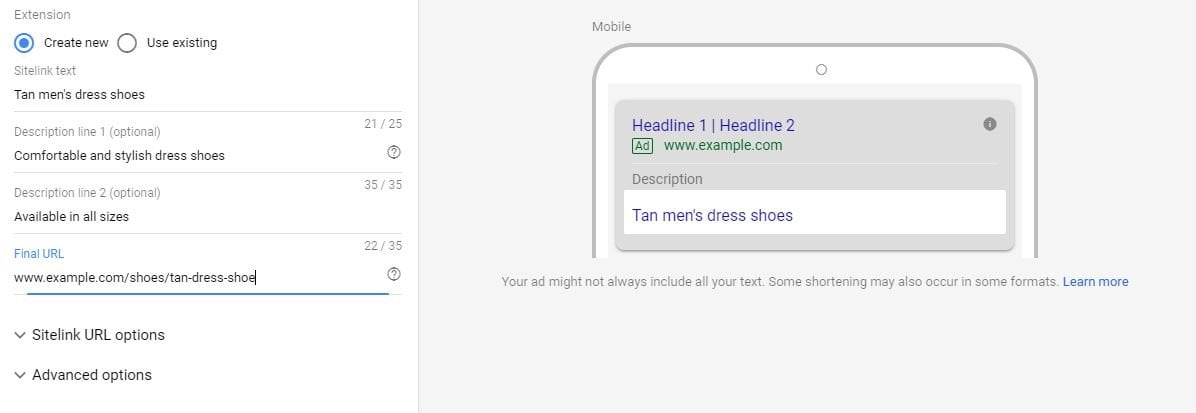
If you provide descriptions, these will also be displayed with the ad. It can serve as a way to give users more information to make them want to click.
Sitelink extensions are low maintenance, too.
Set them up and they are easy to track.
Pay attention to the number of impressions they receive. If it is low, Google may not be displaying them because they need tweaking.
In this case, try either changing the final URL or descriptions.
If the click-through rate isn’t up to your standards, the ads copywriting probably could be reworked. Craft it in a way that uses keywords or speaks more to customers needs.
A creative way to use sitelinks is for holidays or limited deals.
You can schedule your sitelink to only appear on certain dates with links to the exact sales.
Similar to practically all of the above extensions combined is the structured snippet extension. It enables marketers to display specific information about their products.
This opens the opportunity to mention things that your customers want, potentially increasing their chance to click.
Let’s say that you own a men’s shoe store for example. Your structured snippet might look something like this.
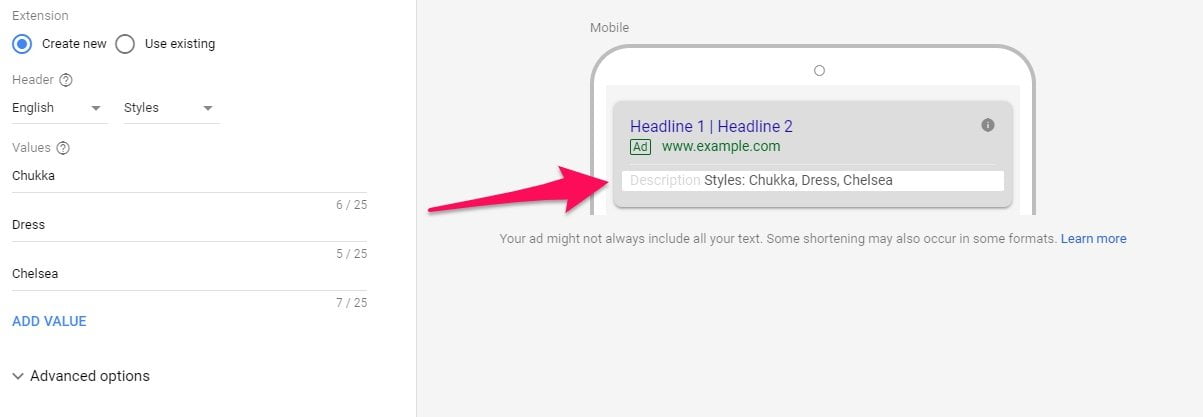
For this ad, let’s say that you’re targeting a transactional keyword like “Best men’s boots.”
Your final URL directs users to the boots categories of your online store.
In the structured snippet, you choose to list several different styles of boots. When users see your ad, they instantly know what to expect by clicking your ad.
Last but not least, the promotions extension. While other extensions can do a good job at advertising deals and sales, nothing does it better than this.
This extension can easily help you achieve a higher click-through rate on your final URL. Let’s look at how.
When you’ve selected it, you can display the:
- Exact currency
- Type of discount(monetary or percent)
- The item on sale
- Discount code
- Minimum order amount
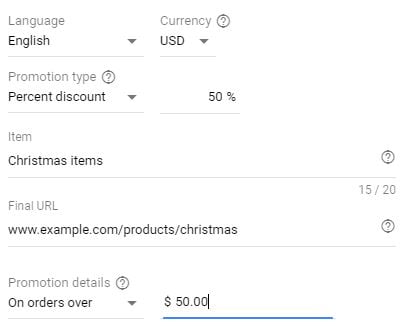
Users searching will be able to see the exact dollar or percentage amount they could be saving. Pair this with an optimized landing page and you could be generating more sales.
Final URL report
Wouldn’t it be nice if there was a report that showed you all of your final URLs, their click-through rates, and other stats?
Well, Google was nice enough to give us one.
Click the reports button in the top right of the AdWords dashboard. This will display a drop-down menu. Under predefined reports, navigate to basic and then final URL.
This will give you a report like the one below, which can be filtered by ad group or campaign.

This will tell you your exact click-through rate, conversion rate, and more useful stats.
If you have ads with low CTR, try testing a different final URL and observe if there are any positive changes in the report.
Analyze this report on a monthly basis, or however often you find works for you.
Doing so consistently will enable you to track progress and notice any trends between URLs you’ve used.
Conclusion
AdWords is an effective network for driving traffic and generating sales.
But, you have to ensure that you optimize your ads, with the final URL being one of the key areas.
Many marketers are losing out on conversions and better click-through rates by not maximizing their final URLs.
Targeting the right audience and keywords is the best place to start. Use Google’s Keyword Planner to narrow down phrases that best suit your business and have buying potential.
Next, focus on testing various final URLs and different pages they will take users. Not every keyword is the same, so certain landing pages may perform better with different keywords.
Take advantage of Google’s new expanded text ads to ensure that your ads are mobile responsive, as well.
Every device views ads differently, so it’s crucial to give users on mobile devices a proper viewing experience.
Price extensions can help improve your click-through rate by displaying prices and give you the ability to test final URLs between desktop and mobile.
Don’t limit yourself to just one type of extension. Sitelink, structured snippets, and others all have their benefits.
You can implement different extensions for various ad groups or campaigns to discover which ones perform the best for your ads.
Then, it’s time to gather all of the data. Take a look at the final URL report in your AdWords dashboard to discover which URLs are performing the best.
Don’t miss out on any customers, try out these tactics today and you’ll maximize your AdWords potential.
What is your #1 tip for optimizing the final URL in AdWords?



